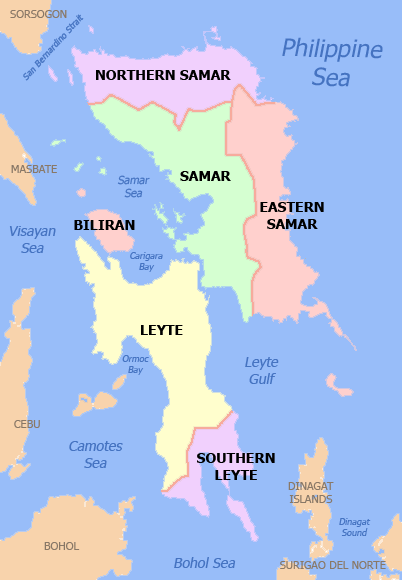BITUIN AT PANGANORIN
Ako’y
nagsapanganorin upang ikaw’y makausap
At sa pisngi niyong langit ang dilim ko’y inilatag;
Ang nais ko’y matapakan ka ng sapot kong mga ulap
At nang yaong pagsikat mo’y ako lang ang makamalas:
At sa pisngi niyong langit ang dilim ko’y inilatag;
Ang nais ko’y matapakan ka ng sapot kong mga ulap
At nang yaong pagsikat mo’y ako lang ang makamalas:
Bituin
kang sakdal gandang hatinggabi kung sumilang
Na Buwan ang iyong ina at ang ama’y yaong Araw,
Ang Araw na iyong ama nang malubog sa kanluran
Ay nagsabi sa palad kong huwag kitang lalapitan.
Na Buwan ang iyong ina at ang ama’y yaong Araw,
Ang Araw na iyong ama nang malubog sa kanluran
Ay nagsabi sa palad kong huwag kitang lalapitan.
Ako
nama’y sumang-ayon dapwat ako’y Panganorin
Na talagang hatinggabi kung lumapit sa Bituin,
Kaya ikaw, Bituin ko’y nasuyo ko’t naging akin.
Na talagang hatinggabi kung lumapit sa Bituin,
Kaya ikaw, Bituin ko’y nasuyo ko’t naging akin.
Liwanag
mo at dilim ko’y magdamag ding naghalikan,
Ngunit tayo’y inumaga! … Akong dilim ay naparam
At natakot sa ama mong nandidilat sa silangan!
Ngunit tayo’y inumaga! … Akong dilim ay naparam
At natakot sa ama mong nandidilat sa silangan!
ANG
AKING INA
Gaya rin ng iba, ang ina kong giliw
Ay inang mayumi’t lubhang maramdamin,
Inang hindi yuko sa mga hilahil,
Inang mapagbata at siya kong virgen.
Ay inang mayumi’t lubhang maramdamin,
Inang hindi yuko sa mga hilahil,
Inang mapagbata at siya kong virgen.
Mayrong isang Diyos na kinikilala,
May isang dakilang pananampalataya,
Sa kanya ang madla’y kulay ng umaga,
Ang galit ay awa’t sa poot ay tawa.
May isang dakilang pananampalataya,
Sa kanya ang madla’y kulay ng umaga,
Ang galit ay awa’t sa poot ay tawa.
Siya ang dakilang Batas sa tahanan,
Kamay na masipag, Kampana ng buhay,
Susi ng pag-ibig na kagalanggalang.
Kamay na masipag, Kampana ng buhay,
Susi ng pag-ibig na kagalanggalang.
Sa kanya ang lahat ay pawang mabuti,
Ang dukha’t mayaman ay kapuripuri
Palibhasa’y inang may puso’t pagkasi.
Ang dukha’t mayaman ay kapuripuri
Palibhasa’y inang may puso’t pagkasi.
ANG
MGA LABI MO
Ang mg̃a labi mo ay dalawang lang̃it,
Lang̃it-na di bughaw, ni lang̃it ng̃ hapis,
Labi ng̃ bulaklak na kapwa ninibig
Labing mababang̃o, sariwa't malinis.
Labi ng̃ sampagang may pait at awa,
Tipunan ng̃ pulót, tamis at biyaya,
Sisidlang ang lama'y kabang̃uhang pawa,
Pook na tipanan ng̃ hamog at diwa.
Tagapamalita ng̃ lihim ng̃ puso,
May oo at hindi, may tutol at samo,
May buhay at palad, may tula't pagsuyo.
Ang̃ mg̃a labi mo'y may pulót na tang̃i
Kung iyan ang aking pagkaing palagi'y
Talo ko ang lahat, talo ko ang Hari.
Ang mg̃a labi mo ay dalawang lang̃it,
Lang̃it-na di bughaw, ni lang̃it ng̃ hapis,
Labi ng̃ bulaklak na kapwa ninibig
Labing mababang̃o, sariwa't malinis.
Labi ng̃ sampagang may pait at awa,
Tipunan ng̃ pulót, tamis at biyaya,
Sisidlang ang lama'y kabang̃uhang pawa,
Pook na tipanan ng̃ hamog at diwa.
Tagapamalita ng̃ lihim ng̃ puso,
May oo at hindi, may tutol at samo,
May buhay at palad, may tula't pagsuyo.
Ang̃ mg̃a labi mo'y may pulót na tang̃i
Kung iyan ang aking pagkaing palagi'y
Talo ko ang lahat, talo ko ang Hari.
LUHA
Luha ay pumapatak,kapag ika’y nasasaktan
Maaari din naming n ito’y sa sobrang galak,
At kapag nakita ng kapwa na hirang
Kasunod na nito Ang paglingang ganap.
Agad magtatanong kung ano ang nangyari?
May problema ka ba? O May umaapi?
Maaari din naman na may sumasakit
O hindi matiis ang bigat ng dibdib .
Pero mas masarap na ika’y lumuha
Nang dahil sa tuwa at sobrang galak
Dahil sa biyaya na iyong natanggap
Kaya’ t sa pasalama’t ang luha’y pumatak.
Ngunit mas masarap na ika’y lumuha
At ito’y pahirin ng mahal mong sinta
Na nasa iyong tabi, Kasabay ang sabing,
HINDI KA NA LULUHA PANG MULI.
Luha ay pumapatak,kapag ika’y nasasaktan
Maaari din naming n ito’y sa sobrang galak,
At kapag nakita ng kapwa na hirang
Kasunod na nito Ang paglingang ganap.
Agad magtatanong kung ano ang nangyari?
May problema ka ba? O May umaapi?
Maaari din naman na may sumasakit
O hindi matiis ang bigat ng dibdib .
Pero mas masarap na ika’y lumuha
Nang dahil sa tuwa at sobrang galak
Dahil sa biyaya na iyong natanggap
Kaya’ t sa pasalama’t ang luha’y pumatak.
Ngunit mas masarap na ika’y lumuha
At ito’y pahirin ng mahal mong sinta
Na nasa iyong tabi, Kasabay ang sabing,
HINDI KA NA LULUHA PANG MULI.
NGITI
Ang ngiti sa iyong labi ay huwag mong iwawaglit,
Pagkat ito sa iba’y kapayapaan ang hatid.
Huwag hahayaang sa iba’y ipagkait
Kahit saang dako ikaw makarating.
Ang biloy sa iyong pisngi,kapag ika’y nakangiti
Para kang inosenteng munting sanggol
Na sa duyan naka imbi
Hayaan mo lamang habang lumalaki
At sa buhay mo ay maging bahagi.
Ang ngiti sa iyong labi ay huwag mong iwawaglit,
Pagkat ito sa iba’y kapayapaan ang hatid.
Huwag hahayaang sa iba’y ipagkait
Kahit saang dako ikaw makarating.
Ang biloy sa iyong pisngi,kapag ika’y nakangiti
Para kang inosenteng munting sanggol
Na sa duyan naka imbi
Hayaan mo lamang habang lumalaki
At sa buhay mo ay maging bahagi.
Reaction: Out of five poems I choose NGITI . The poem NGITI says that don't loss your smile in your lips. Smile make us strong and make us calm in every way. Smiling have been shown to lessen pain. Smile release endorphin's that lift our moods, but many of these act as natural painkillers too.


